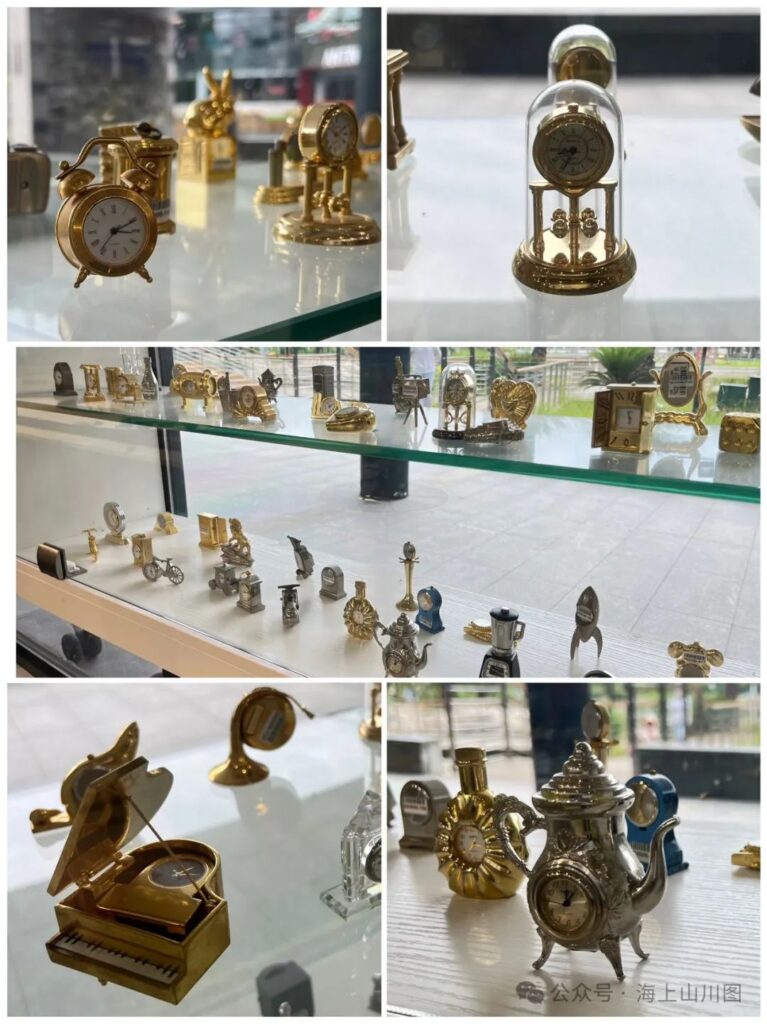Zhejiang, an ancient land, stands like a dazzling pearl on the tourism map of the East. It attracts tourists from all over the world with its endless charm, inviting them to explore its beauty and mystery.
Some traverse mountains and rivers just to catch a glimpse of the graceful West Lake, captivated by the ripples on the water’s surface and the swaying willow trees; others, with a longing for Wuzhen, wander through the stone-paved alleys, listening to the whispers of time and experiencing the charm of the ancient town.
However, hidden within these bustling tourist destinations lies a little-known thousand-year-old temple—Guoqing Temple. It stands quietly, like a wise old man, guarding this ancient land.
Guoqing Temple not only offers free admission but also allows every visitor to enjoy a delicious vegetarian meal for just 2 yuan, with its unique compassion. This is not just a meal, but a baptism and nourishment for the soul.
As one of China’s most conscientious 5A scenic spots, Guoqing Temple displays a unique beauty through its inclusiveness and compassion. It does not seek fame or fortune, only wishing that every visitor can feel inner peace and tranquility.
Standing at the entrance of Guoqing Temple, one can almost hear the echoes of history and feel the sedimentation of time. This is a place that captures the heart and mind, a sacred land that makes people linger and forget to leave.

Here, history is long, and the incense is prosperous.
Guoqing Temple, located in Tiantai County, Taizhou City, Zhejiang Province, is like a dazzling pearl embedded in this lush green land.
Its predecessor, named Tiantai Temple, carries a deep cultural heritage. Later, it was renamed Guoqing Temple, implying that “if this temple is built, the country will be tranquil.”
In the 18th year of the Kaihuang era of the Sui Dynasty, it first appeared before the world. After experiencing the vicissitudes of time, it gained royal favor in the 12th year of the Yongzheng reign of the Qing Dynasty and was rebuilt by imperial decree.
Now, it has traversed more than 1,400 years of long history, witnessing countless historical changes.


This temple is not only a sacred place for Chinese Buddhism but also a symbol of the origin of Buddhist sects. Its influence spreads overseas, with the Buddhist cultures of Japan and South Korea originating from here. Therefore, not only Chinese monks come to worship, but also many believers from Japan and South Korea. They kneel devoutly, praying for peace of mind and wisdom.
In Guoqing Temple, there is no bustling commercial atmosphere, no vendors pulling you to buy incense or fortune-telling. It is tranquil and solemn, with a far-reaching reputation yet without ostentation. More admirable is that it never charges a penny for admission, accepting every visitor with a pure Buddhist heart.
This place is indeed a pure land among temples. When you step into this land, you can feel a refreshing breeze coming at you, making you feel relaxed and happy. With every step, you can hear the echoes of history and feel the sedimentation of time. Guoqing Temple, like a wise man, quietly tells the story of a thousand years, inspiring awe and admiration.

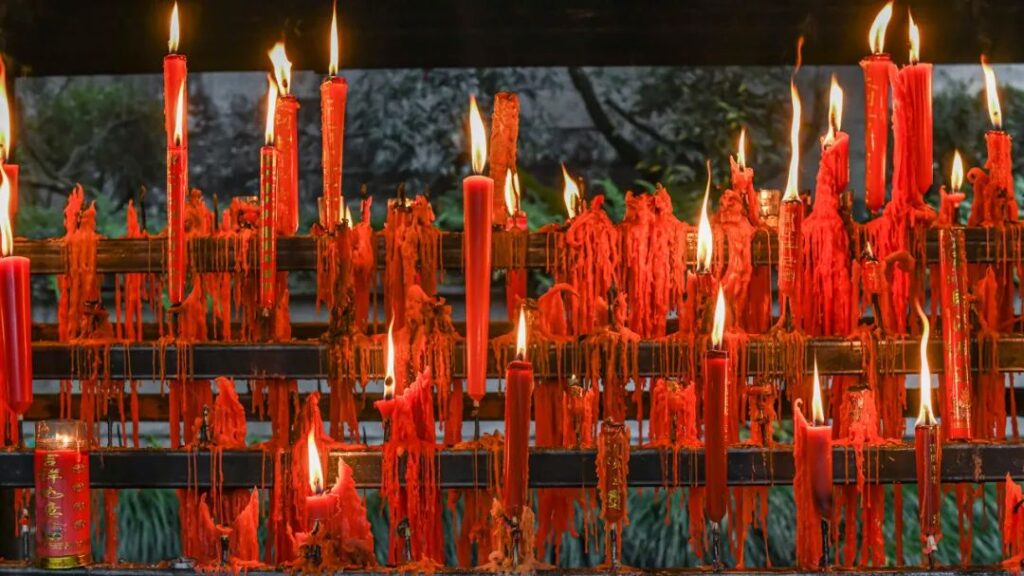
Here, the four seasons are like pastoral scenes, and everywhere is picturesque.
Guoqing Temple, a sacred place with the beauty of three Sui Dynasties, captivates the heart and mind.
The first thing that catches the eye is the thousand-year-old ancient temple.
It stands quietly, like an ancient guardian, with every brick and tile, every grass and tree, imbued with a rich historical and cultural heritage. Walking through it, one can almost hear the echoes of history and feel the sedimentation of time.


Next is the 1,400-year-old Sui plum tree.Every February, it blooms with a full tree of flowers, exuding a fragrant aroma, as if the entire temple is enveloped by this floral scent.
Standing under this Sui plum tree, it’s as if one can travel through time, converse with the ancients, and experience that tranquility and beauty.

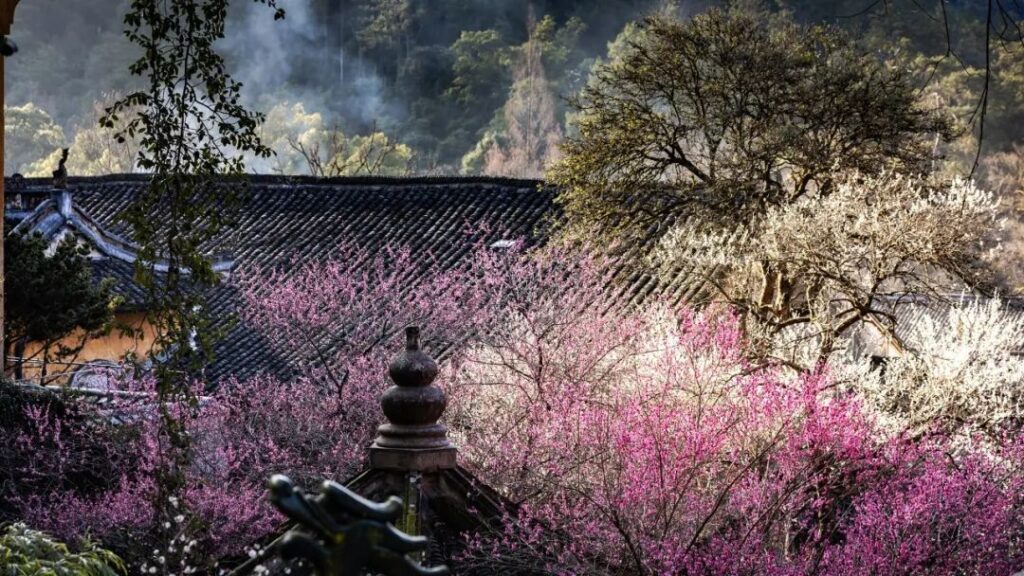
Finally, one cannot miss the Sui Pagoda standing in the rice fields.
It is tall and solemn, with each level of the pagoda body embedded with Buddha statues, showcasing the exquisite craftsmanship of ancient artisans. The Sui Pagoda is not only a symbol of Guoqing Temple but also a treasure of ancient culture.
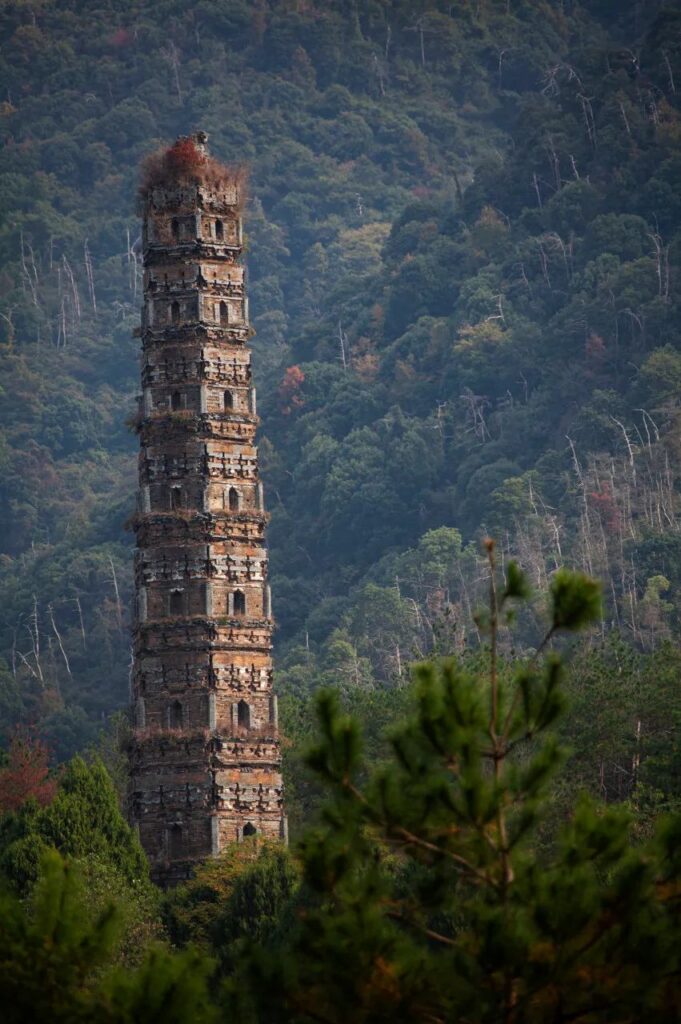
Arriving at Guoqing Temple, the sense of tranquility, serenity, primitiveness, and Zen immediately greets you.
This is not only because of the well-arranged and distinct natural environment here, giving people the feeling of being in a fairyland. More importantly, the environment here retains its original appearance, and even the way of practicing is in accordance with tradition.


The fields under the Sui Pagoda are where the monks focus on both farming and Zen.

They personally cultivate the land and are self-sufficient. This simple way of life allows them to stay away from the hustle and bustle of the secular world and achieve true “stillness.”
Here, time seems to slow down, allowing one’s soul to be cleansed and sublimated.


Here, spending money becomes a difficult task.
In the noise of the secular world, many temples find it hard to resist the temptation of profitability, but Guoqing Temple, like a shining pearl, stubbornly adheres to its “obstinate” purity.

There was a time when Guoqing Temple, as a 5A scenic spot, only charged a symbolic entrance fee of 5 yuan. However, faced with the government’s suggestion to increase the price, it resolutely refused and even abandoned this meager five yuan, choosing to open for free to all!
This feat undoubtedly allowed more people to get close to this pure land and experience the tranquility and charm of Buddhism.

Here, even if you want to taste a vegetarian meal, the price is so low that it makes people gasp. Four dishes and one meal only cost 2 yuan, and staying overnight only costs 25 yuan.
Such prices seem to take people back to that simple era, making them feel particularly close and warm.

If you also yearn for this tranquility and purity, why not set foot on this land and explore the purest corner of China? Tiantai County, where Guoqing Temple is located, is a treasure land worth visiting.
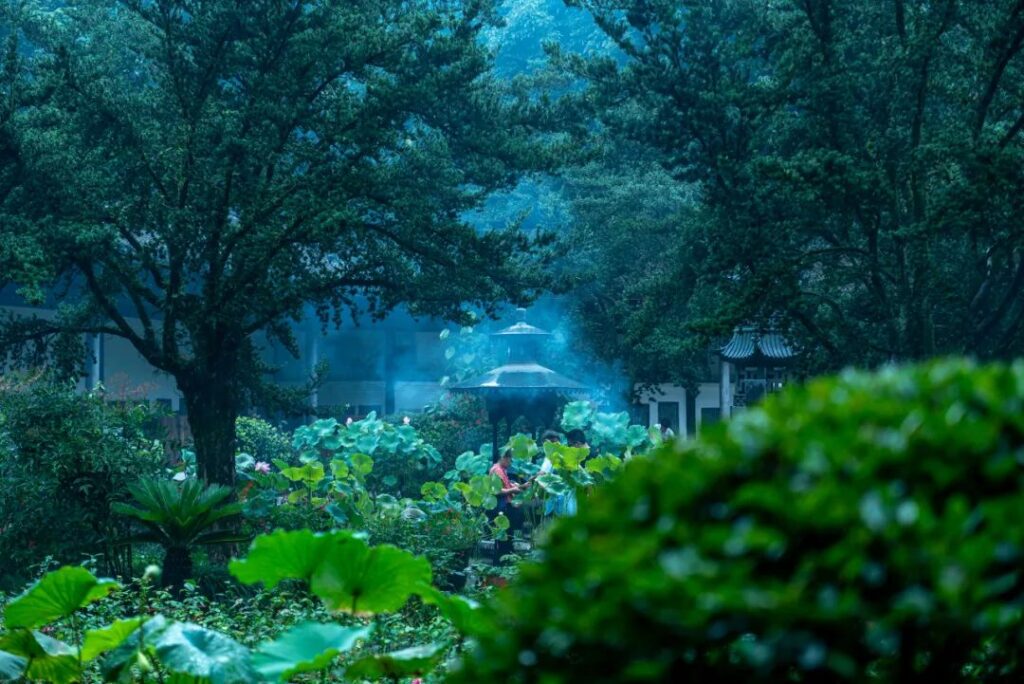

Tiantai Mountain Waterfall, 325 meters high and 80 meters wide at its widest point, with its mighty momentum and spectacular scene, is comparable to Huangguoshu Waterfall and is known as the “highest waterfall in China.”

In summer, it becomes a summer resort. Near the scenic spot, you can feel the cool water vapor, and the sound of water is as loud as thunder. Standing at the bottom of the waterfall, the nine-level flying waterfall is stacked layer by layer, which is amazing.

Qiongtai Fairy Valley attracts tourists with its unique charm of the word “fairy.” Here, strange peaks stand one after another, fascinating people; countless immortals have left their footprints here, and a series of fairy tales are circulating; moreover, one of the nine fairy herbs in China, Dendrobium huoshanense, can be found here.

The valley scenery here not only retains the most original taste of the primitive ecological landscape but also combines the beauty of the south and the magnificence of the north, which is worthy of the title “fairyland on earth.”


Shiliang Flying Waterfall is the essence of the “Tang Poetry Road” in eastern Zhejiang. In the lofty mountains and green valleys, a stone spans across the sky, and the waterfall gushes down, “rising with wind and thunder day and night,” which is amazing.

The spray here is like piled snow and scattered pearls, never-ending all year round; the stone beam hangs high into the clouds, and the flying waterfall falls from the nine heavens, like a silver dragon descending from the sky.


Finally, we must mention Huading National Forest Park. Mount Huading is the highest peak of Mount Tiantai, and Huading Temple is the holy place of Tiantai School, the only Buddhist school that originated in China.
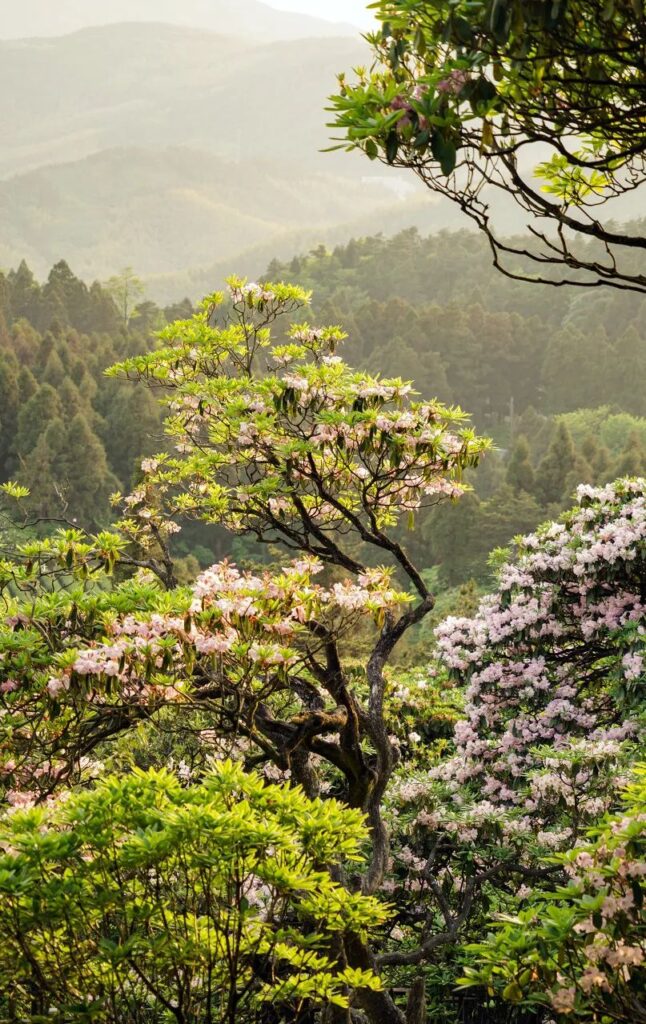
In spring, when the Rhododendron blooms, the top of the mountain is a sea of flowers; in winter, the fog presses on the branches, forming a rare spectacle of rime.
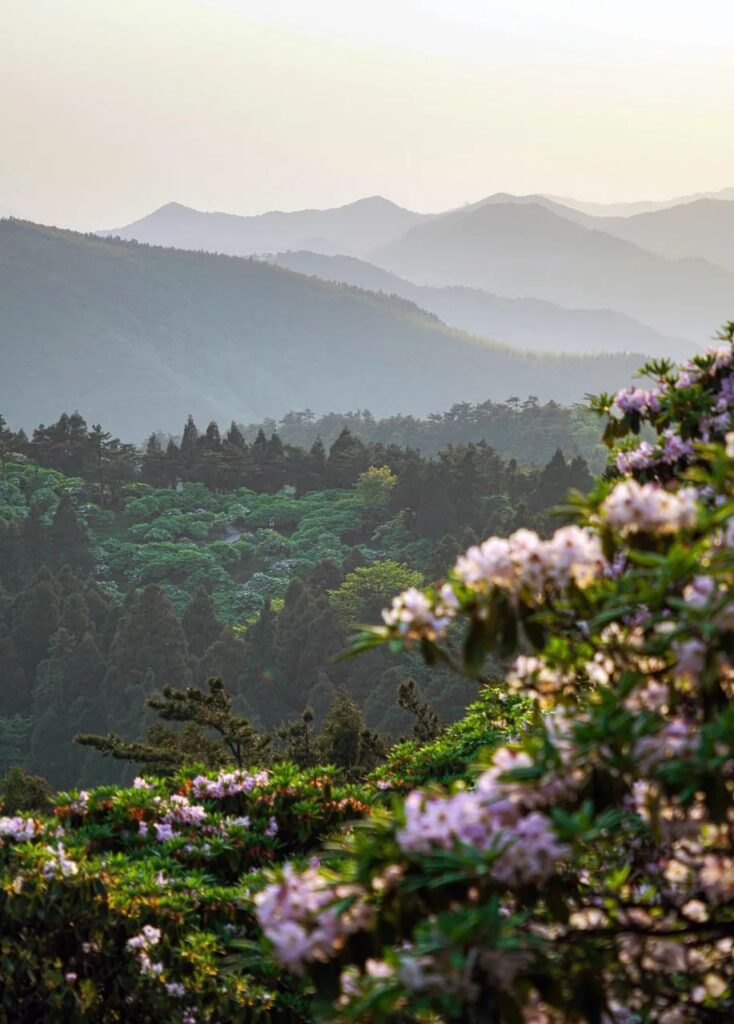
If you come from afar, I strongly recommend that you stay in Taizhou for a few more days to experience this coastal town where mountains, sea, water, and city coexist in harmony.

This was once the end point of the Tang Poetry Road and was deeply loved by poets. Why not follow their poems and encounter a journey full of immortal charm?

Come to Taizhou
Immerse yourself in the mountains and rivers
Enter the fairyland – Shenxian Ju
The moment you step into Shenxian Ju, it’s as if you have truly traveled through time and space and arrived at the secluded residence of the immortals. The mountains, waters, cliffs, caves, rocks, and peaks here all seem to be endowed with life, each displaying its unique charm.
Free from the noise of the city and the pollution of car exhaust, breathing the fresh air here, who wouldn’t desire to find a spiritual home in this pure land?
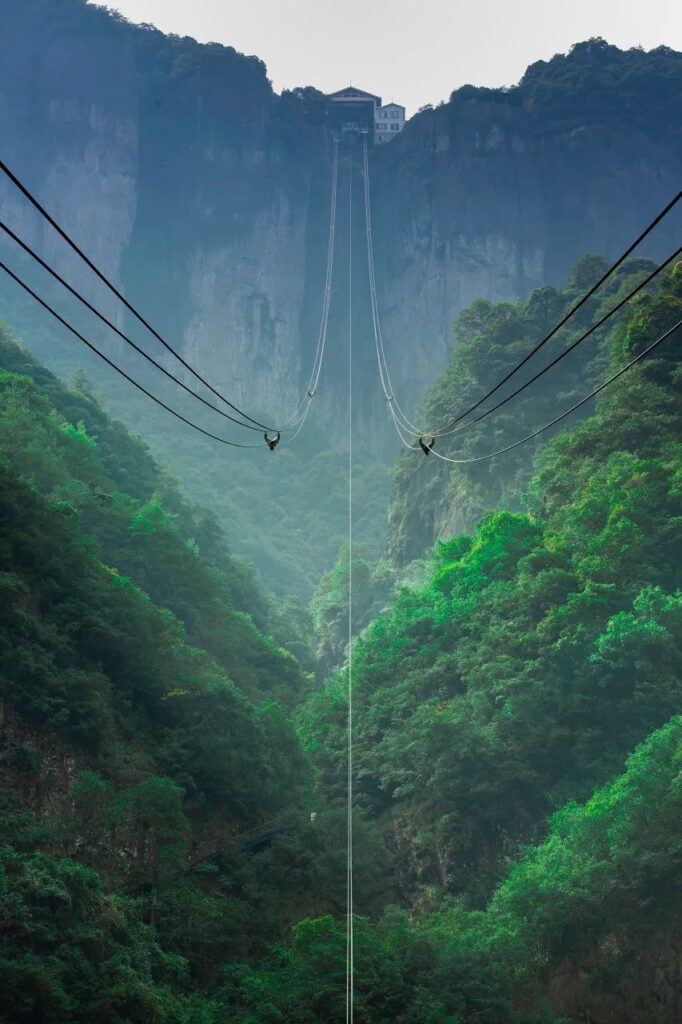
Encounter the “Pearl of the East China Sea” – Mount Kuocang
Countless times it has witnessed the sunrise and sunset, but in the 21st century, China chose to give the first ray of dawn to Mount Kuocang. This mountain seems to be the favorite of nature, possessing endless brilliance.
The wind farm on the mountain, with its well-arranged wind turbines constantly rotating, echoes the natural landscape behind it, forming a beautiful scroll painting.
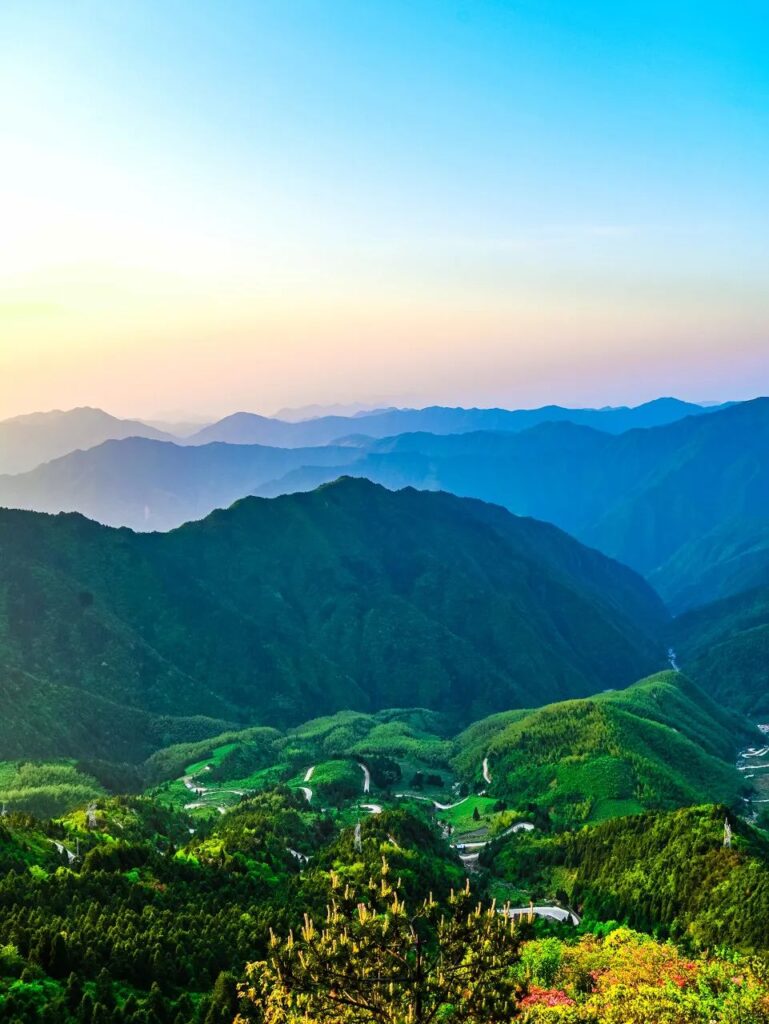
Exploring the Mysterious “Cracks” – Changyu Dongtian
Changyu Dongtian, a vast man-made stone cave, has left 28 cave groups and 1,314 caves after thousands of years. These caves are like masterpieces of nature, with a myriad of shapes and forms, forming a long stone wall corridor.
Crossing the small bridge, climbing the stone steps to the top of the cave and looking down, the magnificent scene is stunning. Going deep inside and looking up, one cannot help but marvel at the miracle created by nature and craftsmen together.

Come to Taizhou
Experience the Freedom of the Sea
Enter “China’s Five Fishing Villages” – Xiaoruo Village
In the embrace of Taizhou, a secret unknown to others is hidden – “China’s Five Fishing Villages,” which is Xiaoruo Village. The houses here seem to be the masterpieces of Mother Earth, with each stone bearing the traces of time. The villagers skillfully paint the stone walls in a riot of colors, adding endless fairy-tale hues to this sea area.
Standing in front of this colorful stone village, facing the shimmering sea, these houses are like exquisite works of art, telling ancient yet vibrant stories.
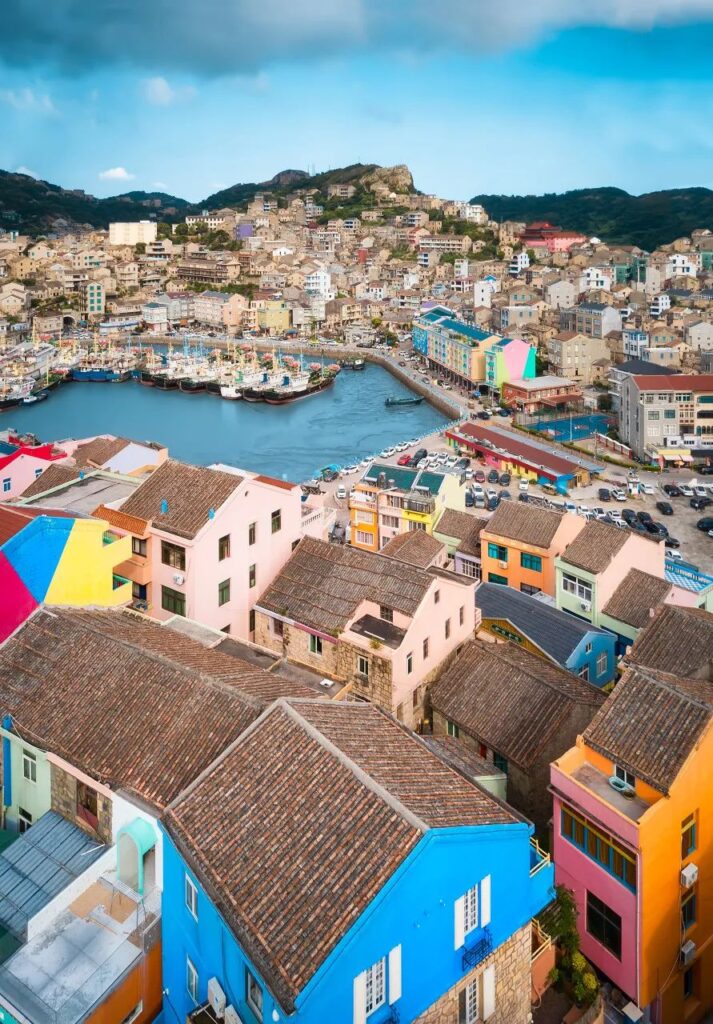
Exploring the Purest Seascape – Dachen Island
If there is truly a pure land in the world that can resist the changes of time, Dachen Island is undoubtedly one of them. From a once barren and decaying desolate island to now becoming a representative of a modern island, Dachen Island has always maintained the simplicity and tranquility of the sea.
Here, you can feel the perfect blend of the weight of history and the convenience of modernity. The tour conditions are neither too luxurious nor too simple; everything is just right, making it the perfect place to steal a few days and relax.

Facing the Sea, Spring Flowers Bloom – Sansuan Island
When you are tired of the troubles of the secular world, longing for a short escape, and enjoying the comfort and beauty of life, Sansuan Island will be a paradise you cannot miss. This humid yet vibrant island is like a brilliant pearl inlaid in the vast sea.
The winding coastline stretches to the boundless distance, as if falling into the embrace of the sky, making it difficult to distinguish where the sky is and where the sea is. Here, you can fully enjoy the embrace of the sea and feel the beauty and tranquility of life.
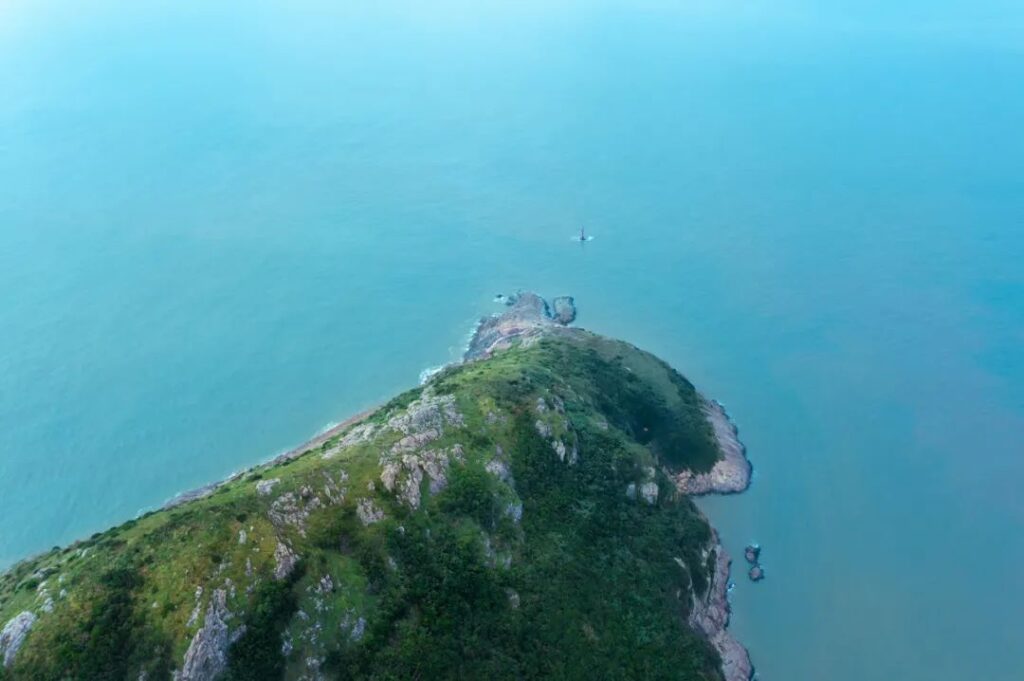

Come to Taizhou
Taste the Strong Ancient Charm
Explore the Living History – Taozhu Ancient City
Taozhu Ancient City, like an old man who has weathered the storms, is built along the mountains and by the sea. Surrounded by mountains on three sides and facing the sea on one side, its terrain is so precipitous that it seems to be a masterpiece carefully carved by nature for defense. Qi Jiguang, the famous general who fought against the Japanese pirates, once strategized here and made great achievements for the stability of the Ming Dynasty. His heroic deeds have been passed down to this day along with this ancient city.
Although not as famous as Wuzhen and Nanxun, Taozhu Ancient City attracts countless explorers with its unique charm. Its tranquility, primitiveness, and history are all waiting to be discovered by those with a keen heart.

A Journey Through Time and Space – Batan Ancient Town
Batan Ancient Town is small and exquisite, like a pearl forgotten by time. Most of the houses here were built in the Ming and Qing dynasties, with ancient theaters, brothels, gambling houses, banks, and everything else, as if taking people back to that prosperous era.
The streets and alleys are quiet, with less of the noisy commercial atmosphere and more of a simple tranquility. If you like the original style of ancient towns, you must not miss this place.

Exploring the “Badaling of Jiangnan” – Taizhou Prefecture City Wall
The Taizhou Prefecture City Wall is known as the “Great Wall of Jiangnan.” Chinese ancient architecture expert Luo Zhewen once praised it as the “blueprint” of the Great Wall in Badaling and other places. Standing under this city wall, with ancient trees towering and lush greenery, it feels like being in a long scroll of history.
Walking up the stone steps, each step seems to hear the echo of history whispering in your ear. On top of the city wall, you can overlook the beautiful scenery of the entire Taizhou city and feel the perfect integration of nature and humanity.

A trip to Taizhou intoxicates life.
Come to Taizhou, feel the deep historical heritage here, appreciate the magnificent natural landscapes, and indulge in the charming coastal scenery. Here, you can experience the harmonious coexistence of nature and humanity and taste a different flavor of life.



